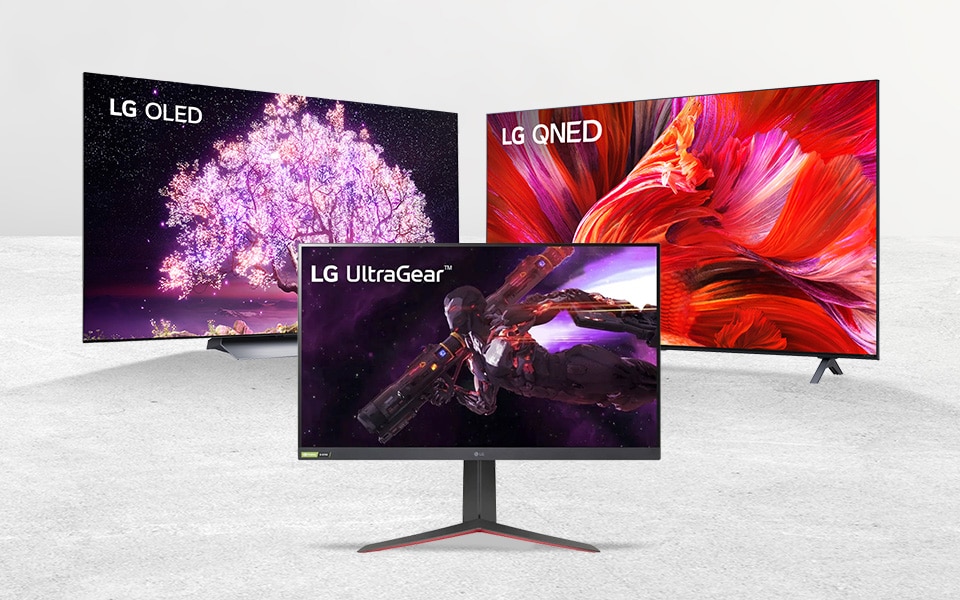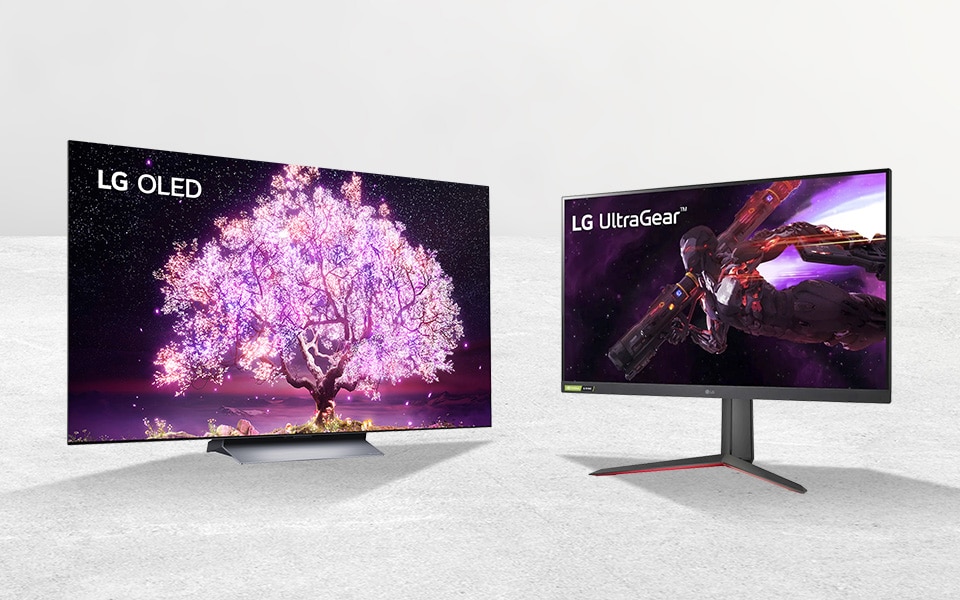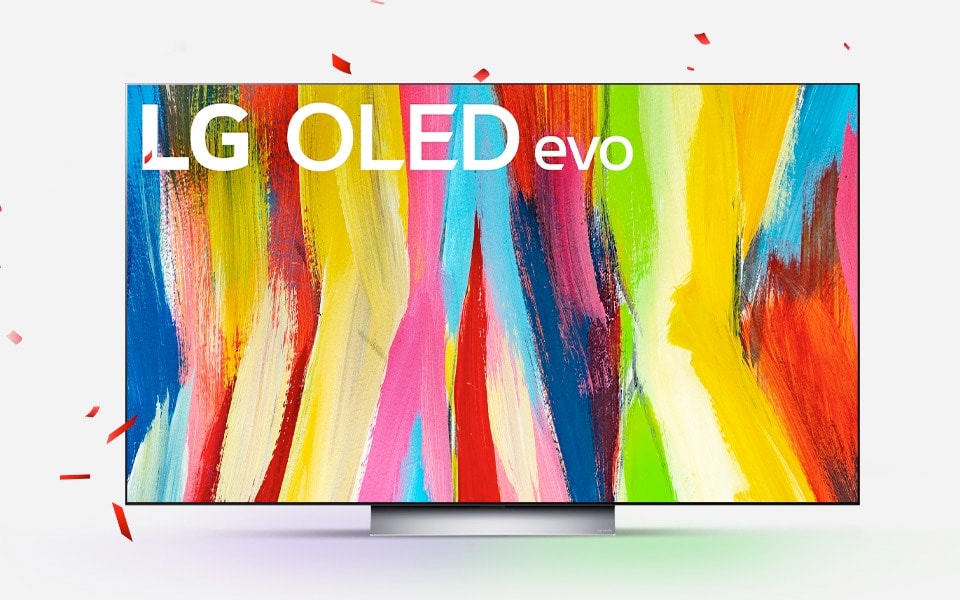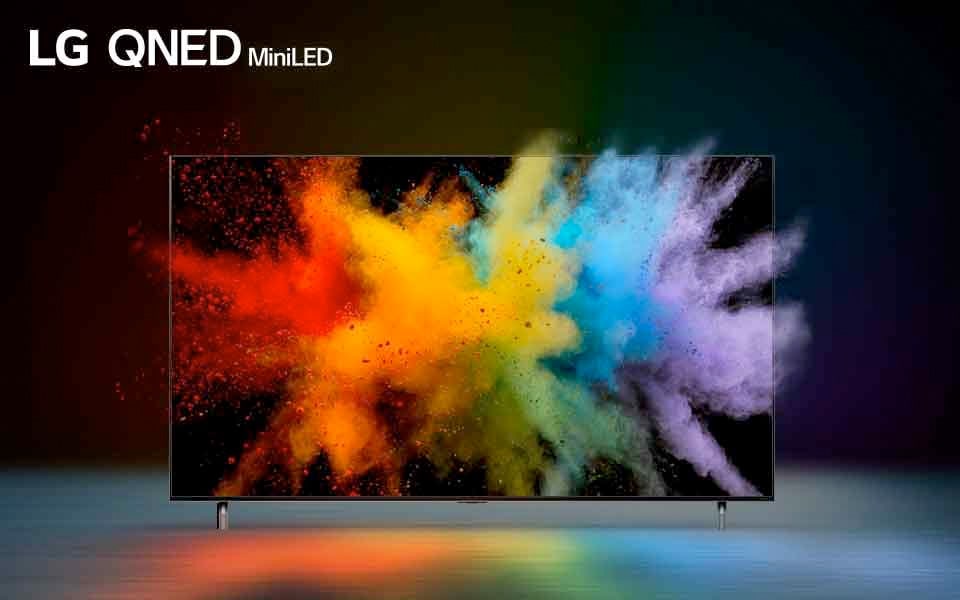We use cookies, including cookies from third parties, to enhance your user experience and the effectiveness of our marketing activities. These cookies are performance, analytics and advertising cookies, please see our Privacy and Cookie policy for further information. If you agree to all of our cookies select “Accept all” or select “Cookie Settings” to see which cookies we use and choose which ones you would like to accept.
Helpful Hints
LG Screen Technology
When looking at our TVs or monitors, you’ve probably come across terms like ‘IPS,’ ‘OLED’ and ‘QNED.’ It’s worth familiarising yourself with these terms and finding out a bit more about the technologies behind them when shopping for a new TV, so here’s an in-depth look at the different screen types available at LG.
Understanding LED Displays
Before we get started, let’s clear up what LEDs are, and explain how they’re used in different types of screens today.
LEDs – or light-emitting diodes – are semiconductor light sources that convert electrical energy into light. In display panels, these LEDs are packed close together, although you won’t notice the LEDs behind the LCD screen.
LED/LCD technology is widely used for all sorts of displays: you’ll find them in TVs or , laptops or , monitors or and older smart phones, as well as in different types of digital signage or .
Pixels
All digital images are made up of pixels. These are the tiny dots or squares – or clusters of diodes – on display panels that emit coloured light. Each cluster equates to one pixel; each pixel is made up of three colour filters or sub-pixels (red, green, and blue).
The number of pixels determines the resolution, and is a key factor for the image definition of your display. You can find out more about screen resolution with our in-depth guide.
LED vs. LCD
A key thing to remember is that LED backlit televisions are actually a type of LCD display, and that both technologies use the liquid crystal screen to produce an image. The difference has to do with the backlighting technology used.
LCD (liquid-crystal display) technology uses cold cathode fluorescent lamps, or CCFLs, as backlights. These are placed evenly behind the screen to deliver consistent light across the whole panel, so the picture has the same level of brightness everywhere.
LED/LCD TVs replace these bulbs with LED backlight technology. There are two types of LED backlighting: Full-array backlighting, Direct LED and Edge LED.
Full-array backlighting places the LEDs evenly across the entire screen, arranging them in zones. In each zone, the LED lights can be dimmed (this is known as local dimming technology), and this dramatically improves image depth and blacks. Local dimming allows you to enjoy better contrasts, as specific regions of the panel can be dimmed. On standard LCD displays, this isn’t possible, because the whole picture is evenly lit, as one giant zone.
Edge lighting places the LEDs at the bottom of the screen, rather than across the whole panel. Edge-lit displays don’t produce the same high-quality pictures as full-array LEDs, although they are slimmer.
Meanwhile, OLED technology has eliminated the need for backlighting altogether.
LG IPS Technology
IPS, which stands for in-plane switching, is a type of LED display. Liquid crystals are set in parallel between two glass substrates; the molecules of the liquid crystals arrange and shift to produce rich colours.
IPS panels were designed in response to VA panels, which can be limited in terms of their pixel response time, colour reproduction and viewing angles. Unlike VA panels, IPS displays naturally have a wide viewing angle, and this is because the liquid crystals can shift horizontally. In other words, you can watch an IPS monitor or TV from wide viewing positions , with minimal loss of colour contrast.
These displays also offer fantastic colour accuracy and consistency. Because of this, IPS technology is widely used in professional settings, including the broadcasting and medical industries. But domestically, IPS screens can really elevate your viewing experience.
LG OLED Technology
OLED technology uses organic light-emitting diodes (hence the name), and these panels differ to IPS or other LED backlit , that they don’t require a backlight. In an OLED display, the sub-pixels light up when a voltage is applied to produce different colours; this then transmits an image on-screen.
OLED displays have deeper contrast ratios, meaning they can reproduce pure black colours brilliantly. This is because the individual pixels can be turned off, allowing no light to pass through. This is not achievable with LED/LCD panel and as a result a little light will always get emitted, so these displays will struggle in a darkened viewing environment. What’s more, OLED panels can be energy efficient, because the pixels don’t consume power when they are showing black.
Like IPS monitors, however, OLED panels have wide viewing angles – averaging at 70° from the centre, in fact. This makes OLED displays perfect for shared viewing, or for use in spacious rooms; you won’t experience variations in colour or brightness, even if you’re sat slightly to the side of the screen.
And because they do away with the backlighting technology that underpins LED/LCD displays, OLED TVs and monitors can be slim.
Our OLED evo TVs take this technology a step further; these TVs are able to produce an even brighter display with incredible vibrancy and detail. OLED evo technology uses an extra green-emitting material in the OLED panel, to increase peak brightness levels for a more vivid display. The panels in LG OLED evo TVs also use Deuterium: an organic material that can withstand a higher voltage, and is known to last longer.
LG QNED Technology
Our QNED technology is a premium LED/LCD TV with LG’s new proprietary wide color gamut technology,
Dynamic QNED Color Solution.
This unique technology enables light from the backlight to be expressed in pure colors that are as realistic as they appear to the eye in general life.
And because we use IPS panelsour QNED TVs offer wide viewing angles and faster response times to reduce motion blur – an advantage when you’re watching fast-paced games or sports.
Take a look at our TV buying guide to find out whether an OLED or QNED TV is right for you.
The constant innovations in display technology make for an exciting future. At LG, we design electronics to power your passions and keep you connected – whether you’re hosting a movie night or video calling loved ones overseas. Discover what technology can do for you, today.
Related posts
Life's Good!
Featured product
- Newest
- Most Popular




.png)
.png)
